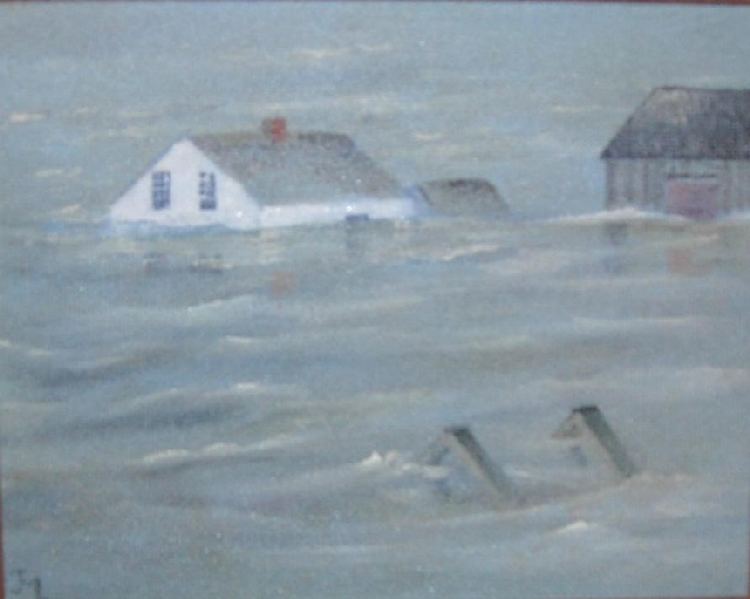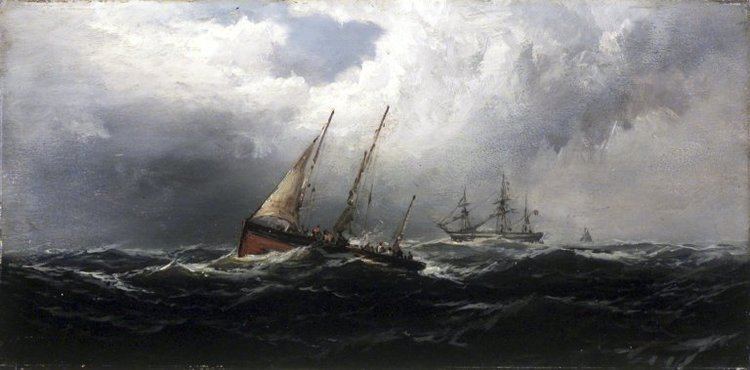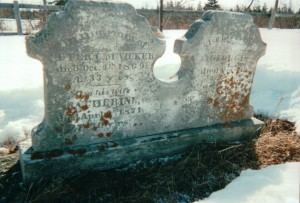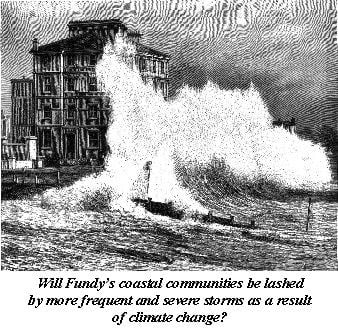Highest winds 169 km/h Fatalities 100 | Start date October 1869 | |
 | ||
Formed October 4, 1869 (1869-10-04) Dissipated October 5, 1869 (1869-10-06) Lowest pressure 965 mbar (hPa); 28.5 inHg Areas affected Date 4 October 1869 – 5 October 1869 Similar Great Colonial Hurricane, 1815 New England hurricane, 1775 Newfoundland hurricane, Hurricane Edna, Hurricane Juan | ||
The Saxby Gale was the name given to a tropical cyclone which struck eastern Canada's Bay of Fundy region on the night of October 4–5, 1869. The storm was named for Lieutenant Stephen Martin Saxby, a naval instructor who, based on his astronomical studies, had predicted extremely high tides in the North Atlantic Ocean on October 1, 1869, which would produce storm surges in the event of a storm.
Contents
Effects

The hurricane caused extensive destruction to port facilities and communities along the Bay of Fundy coast in both New Brunswick and Nova Scotia as well as Maine, particularly Calais, St. Andrews, St. George, Saint John, Moncton, Sackville, Amherst, Windsor and Truro.

Much of the devastation was attributed to a 2-metre storm surge created by the storm which coincided with a perigean spring tide; the Bay of Fundy having one of the highest tidal ranges in the world. The Saxby Gale storm surge produced a water level which gave Burntcoat Head, Nova Scotia, the honor of having highest tidal range ever recorded. It is also thought to have formed the long gravel beach that connects Partridge Island, Nova Scotia, to the mainland.

The storm also produced waves which, combined with the storm surge, breached dykes protecting low-lying farmland in the Minas Basin and the Tantramar Marshes, sending ocean waters surging far inland to inundate farms and communities. Sailing ships in various harbors were tossed about and/or broken up against wharves and breakwaters which were also destroyed. Farmers trying to rescue livestock from fields along shorelines drowned after dykes were breached; over 100 people were killed in the Maritimes alone. The gale destroyed miles of the newly completed Windsor and Annapolis Railway along the Minas Basin near Horton and Wolfville, Nova Scotia.
Naming of the storm

The storm (which pre-dated the practice of naming hurricanes) was given the name "Saxby" in honor of Lieutenant Stephen Martin Saxby, Royal Navy, who was a naval instructor and amateur astronomer. Lt. Saxby had written a letter of warning, published December 25, 1868, in London's The Standard newspaper in which he notes the astronomical forces predicted for October 5, 1869, which would produce extremely high tides in the North Atlantic Ocean during the height of hurricane season. Lt. Saxby followed this warning with a reminder published on September 16, 1869, to The Standard in which he also warns of a major "atmospheric disturbance" that would coincide with the high water level at an undetermined location. Many newspapers took up Saxby's warning in the coming days.
In a monthly weather column published October 5, 1869, in Halifax's The Evening Express, amateur meteorologist Frederick Allison relayed Lt. Saxby's warning for a devastating storm the following week.
Despite the warning, many readers throughout the United Kingdom, Canada, Newfoundland and the United States dismissed Saxby since there were frequent gales and hurricanes during the month of October. The fact that the high tides occurred throughout the North Atlantic basin was unremarkable and astronomically predictable, except for their coinciding with the hurricane which struck the Gulf of Maine and Bay of Fundy to produce the devastating storm surge. Lt. Saxby's predictions were considered quite lunatic at the time. Some believed that his predictions were founded upon astrology, which was not the case.
Letter to the Editor, Dec. 25, 1868
Source: http://wayback.archive.org/web/20050226214115/http://www.magma.ca/~jdreid/saxby25dec.htm
Letter to the Editor, Sept. 16, 1869
Source: http://wayback.archive.org/web/20050301170130/http://www.magma.ca/~jdreid/saxby14sept.htm
Op-Ed Column, Oct. 1, 1869
Source: http://wayback.archive.org/web/20050226162348/http://www.magma.ca/~jdreid/Express.htm
